Evaluating Samsung's QHD AMOLED Displays
by Joshua Ho on July 16, 2014 6:00 AM EST- Posted in
- Smartphones
- Samsung
- Mobile
- Laptops
- Snapdragon 805
- Galaxy S5
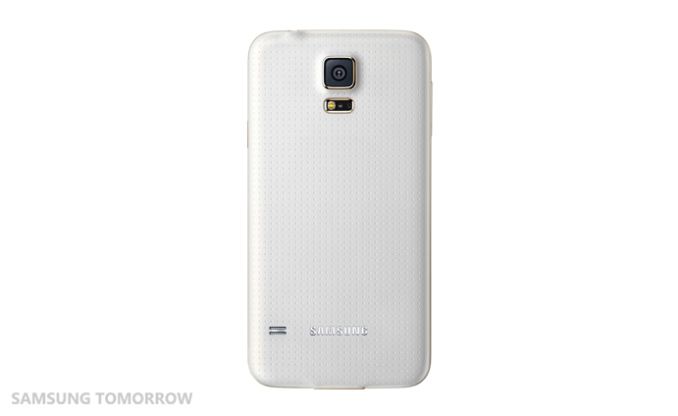
Recently, a package showed up at my door. While this is normally not worth talking about, the Galaxy S5 Broadband LTE-A happened to be in the box. For those unfamiliar with this phone, it's basically a refresh of the Galaxy S5. This means a Snadragon 805 SoC instead of Snapdragon 801. This also means a minor new revision of Krait (450 vs 400), a new GPU, and a separate MDM9x35 modem on a new process (20nm SoC vs 28nm HPm). This variant also ships with more RAM (3GB vs 2GB) and more internal storage (32GB vs 16GB). The display is also higher resolution (2560x1440 vs 1920x1080).
In terms of the resolution itself, the GS5 Broadband LTE-A doesn't seem to hold a significant advantage over the original Galaxy S5. While it's still possible to see the difference, once again I don't find it to be significant. It may be of value to others, but I think the PPI race needs to stop here, as I find it hard to justify the relatively minor resolution increase over the potential battery life gains and opportunity cost of pursuing higher pixel density over other display characteristics. Going to 4K would make even less sense at this display size, although there may be value to 4K in a tablet display. In the case of this display, I only see around a 10 nit reduction in brightness as the maximum luminance in auto brightness is around 430 nits, while on the older Galaxy S5 it was 440 nits. When set manually, the display has a peak luminance of 368 nits, a minor improvement over the previous model.
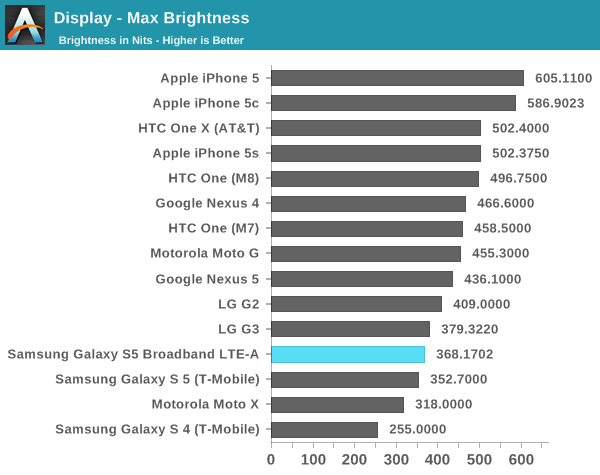
Of course, resolution isn't everything. Testing color accuracy is also important, which is the real surprise here. As always, these tests are run using an i1Pro for all measurements but contrast, and done using a custom workflow in SpectraCal's CalMAN 5. All color/grayscale measurements have been done in cinema mode as it is closest to targeting sRGB.
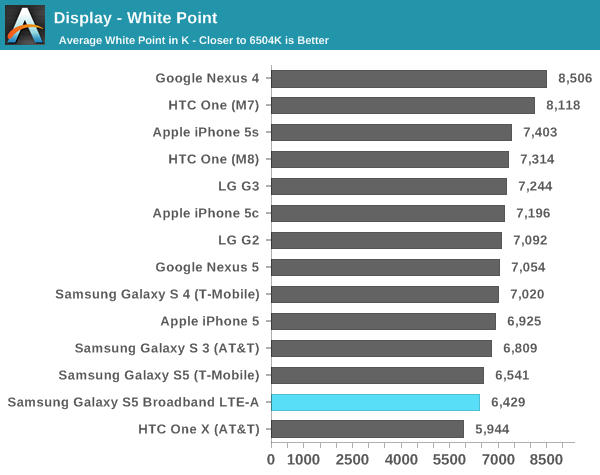

Based on grayscale alone, Samsung sets a new record for color accuracy in this department. It's definitely a healthy leap forward from the original Galaxy S5. In subjective viewing there are still some minor issues with excessive green in the color balance, but it's much better than before. The contrast is still just as dark as before. In a completely dark room, I can't tell whether the screen has turned off when displaying an all-black image.
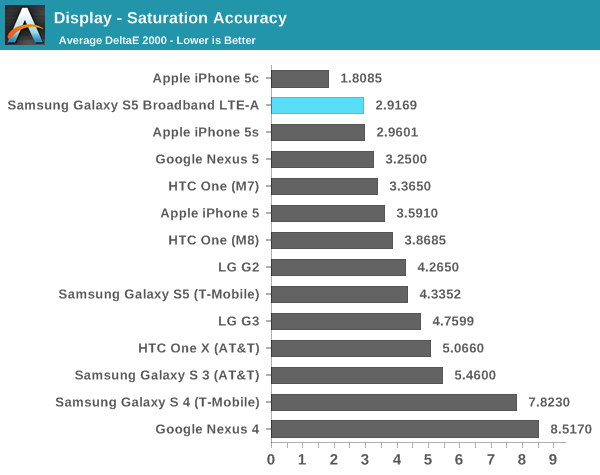
In saturations, Samsung has done an incredible job of calibrating the display. Just looking at the graph of dE2000 averages, there is clear improvement from generation to generation. Samsung is now tied with Apple for color accuracy in this department.
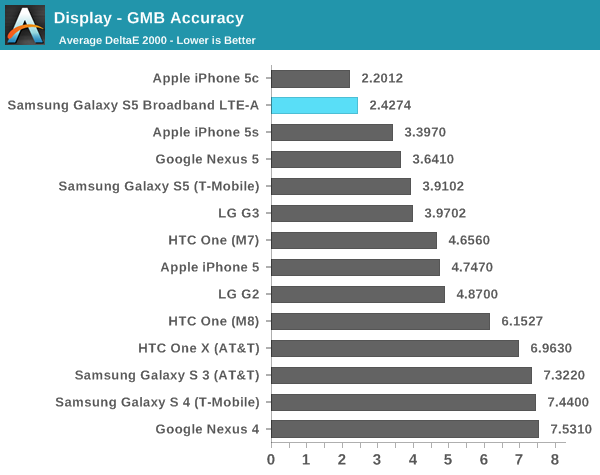
While the saturation test is important, it's often not as rigorous at the GMB ColorChecker test. It's fully possible for a display to do well in the saturation test but fall flat in this one. Fortunately, this isn't the case here. Samsung has managed to approach the iPhone 5c in calibration accuracy here, easily setting a record amongst Android OEMs. The difference in color is definitely noticeable when compared to a Galaxy S5, and I hope that every Android OEM follows Samsung's lead in this department.
Based upon this initial evaluation of Samsung's first quad HD AMOLED display, things are looking good. There is a small drop in the maximum luminance but nothing significant. The next critical piece of the puzzle is whether power draw is significantly worse on the Galaxy S5 Broadband LTE-A, although those results and the full review aren't quite ready yet. While only one aspect, things are currently looking up for the GS5 Broadband LTE-A, even if the name is a bit long. This may also represent a change in the future of mobile displays, as AMOLED increasingly seems poised to supplant LCD technologies. Unfortunately, as Samsung seems to be the sole supplier of such displays other OEMs are unlikely to adopt AMOLED until other vendors catch up with equivalent technology.


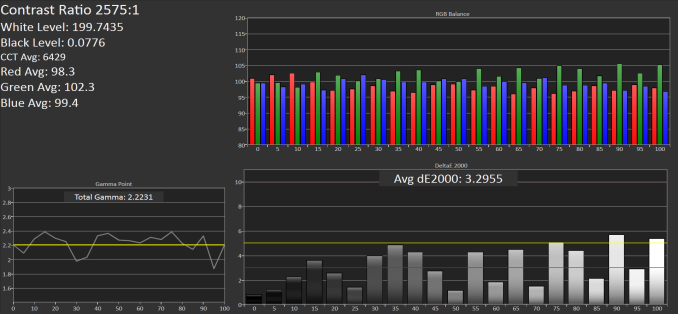

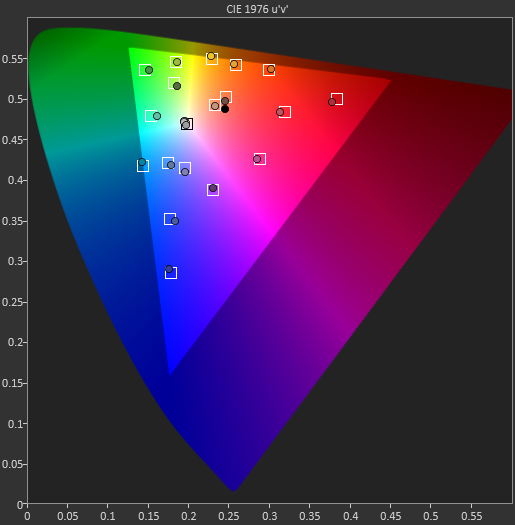








71 Comments
View All Comments
Hairs_ - Wednesday, July 16, 2014 - link
1)Battery life, battery life, battery life, battery life and Battery Life.2) Size.
3) Outdoor visibility.
4) Battery life.
These are what consumers care about for screens.
Even if people cared about display calibration, hardly anyone is going to invest in the expensive hardware and software necessary to actually correct it.
althaz - Wednesday, July 16, 2014 - link
People also care about resolution and contrast.There's been hundreds of studies showing that contrast is the most important thing for the subjective quality of a screen, followed by resolution (up to a point).
For the vast majority of people (although not me, I like colours to be as accurate as possible), as long as the colours are ok, then that's all they want.
WaltFrench - Wednesday, July 16, 2014 - link
Yes, “people care” but aside from not wanting to be one-upped by the guy with a higher-spec phone, maybe you could explain why.Once you get to a certain level of contrast, an increase can only be appreciated where there are no screen reflections and the ambient light level is nearly non-existent. This is a use case that applies to watching a video in bed — and most of the videos that people play on phones are hardly art-house investigations into Van Gogh's use of the color palette. Yes, more is always better, but after a point, it's all perfectly good enough.
Ditto for resolution. I can't even focus on an object close enough to my eyes (about 3"/7cm) that my 20/20 vision should be able to distinguish individual 2K-rez pixels. If the phone is driving a HD screen, I am not sitting with the screen up close enough, either.
In isolation, a little overkill is fine, good engineering. But why people should pay anything extra, suffer higher battery drain, or need games to bloat artwork, or tax programmers to refresh all those pixels at decent framerates, is beyond me. Can you help?
althaz - Wednesday, July 16, 2014 - link
There is obviously a limit to what is beneficial. We are there or just about there (or past it to lots of people, personally I feel like anything past 1080p is not worth it for a 5" screen) for resolution, however, we are several orders of magnitude away from that level of contrast (large increases in resolution aren't immediately noticeable, increases in contrast still very much are).However, even with contrast although people will straight away be able to see the benefits, most high-end phones are "good enough". That is, although it's quite noticeable that something else is better - it's only noticeable when two displays are compared, which doesn't happen in your normal use of a phone.
ShieTar - Thursday, July 17, 2014 - link
Distinguishing pixels is not the best criterion to declare a resolution as high enough. Sampling, even with a physically perfect system, will reduce the contrast of an image modulated at Nyquist frequency to about 64%. Ideally you get a screen where there is no noticeable reduction in the Modulation Transfer Function of all frequencies which the human visual system can resolve. For that, you will need a pixel that is significantly smaller than the finest detail you can resolve.Assuming the naked eye is at best able to resolve 1 arcminute, even a 0.25 arcminute screen has some impact on the contrast of resolvable details, and therefore a higher resolution screen could still improve the perceived image quality further:
http://snag.gy/1vpYH.jpg
inighthawki - Wednesday, July 16, 2014 - link
People may think they want higher resolution, because it's what they've been told to look for. But I urge you to find an average user who not only *actually* wants, but can tell the difference between an FHD and QHD display on a 5" display, without staring super close at the pixels with their eyes 1" away.TedKord - Wednesday, July 16, 2014 - link
From the article :"... It's still possible to see the difference... "
Maybe you should ask the author.
andy o - Wednesday, July 16, 2014 - link
I wonder how much the Pentile matrix has to do with that. Pentile basically cuts pure blue and pure red resolution in half.Spunjji - Wednesday, July 16, 2014 - link
The point is that if the display arrives well-calibrated then they don't have to make any additional investments... Also, at what point did Anandtech cater to ordinary consumers?craighamilton - Saturday, December 6, 2014 - link
This only show why it is one of the top rated phones in terms of consumer satisfaction (seen at a consumer based website, such as http://www.topreport.org/phones/ for example...)